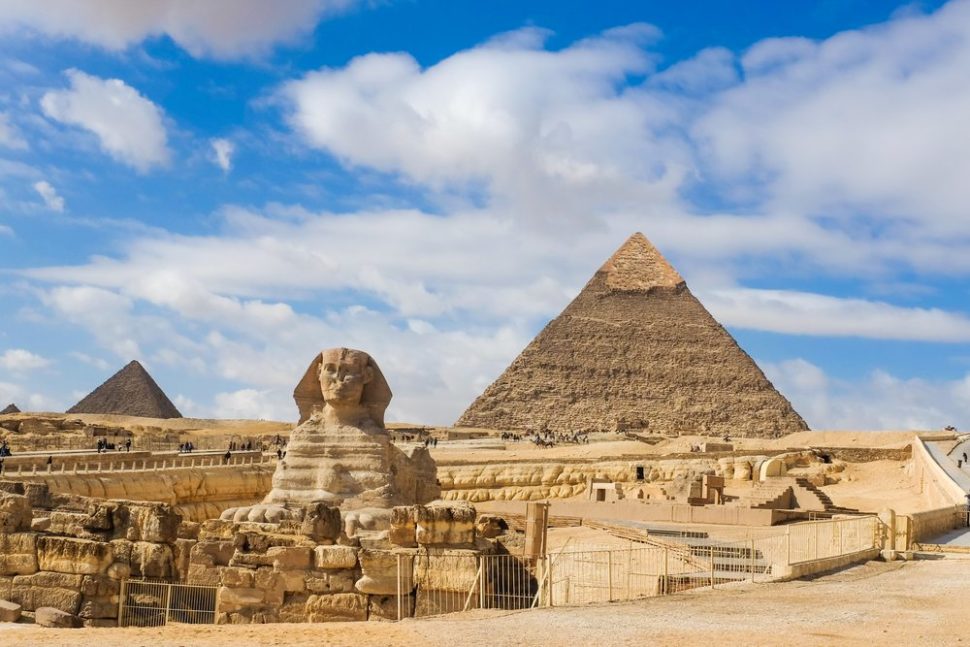A Cairo University team believes it is on the cusp of finding a hidden room in the Great Pyramid of Giza thanks to thermographic mapping.
Sometimes when we delve into history we discover the future.
Take, for instance, the Damascene steel that outperformed weapons developed a thousand years after we lost knowledge of its craft.
That same technology influences our understanding of metal structures–and may lead us to develop better, fatigue-resistant composites.
Thermographic mapping of Giza's subatomic particles reveals secrets.Click To TweetFor that reason, we will always consider archaeological discoveries a potential cutting-edge technology event.
Finding Secrets in the Great Pyramid of Giza
Giza is also known as the Pyramid of Khufu, for the pharaoh who built it sometime between 2580 and 2560 B.C.
These days, it is a well-known tourist attraction. But, even within the last 1000 years, it has attracted adventurers and looters less concerned with preserving its history and more interested in finding ancient treasure.
https://youtu.be/5mqlRTbQ1_E
In the ninth century C.E., Caliph al-Ma’mun dug tunnels into the pyramid itself searching for what might have been hidden within. Egyptologists from the 1800s, Richard Vyse and Giovanni Battista Caviglia, used TNT to explore the structure.
ScanPyramids and Cairo University Engineering
These days, however, scientists are a little more careful with how they look into the Great Pyramid.
An international team led by Medhi Tayoubi, president of the Heritage Innovation Preservation Institute, and in conjunction with the Faculty of Engineering at Cairo University, used laser thermography to map the subatomic particles of the pyramid.
Tayoubi confirmed to AFP that a void had been found within the pyramid: “All the devices we put in place are designed to find where the cavity is located. We know there is one, but we’re trying to find out where.”
Last year in October the team reported finding a void 105 meters high in the pyramid’s northeastern section. Yet, the void they found corresponded to already discovered rooms.
For these new vacancies, other archaeologists on the team are more hesitant in their projections. Former Egyptian Minister of Antiquities Zahi Hawass said the team had found only “anomalies” or “small voids” between the pyramid’s stones.
This methodology’s success has inspired other uses as well. For example, thermography was used to map the interior of Fukushima’s nuclear reactors.








Comments (0)
Most Recent